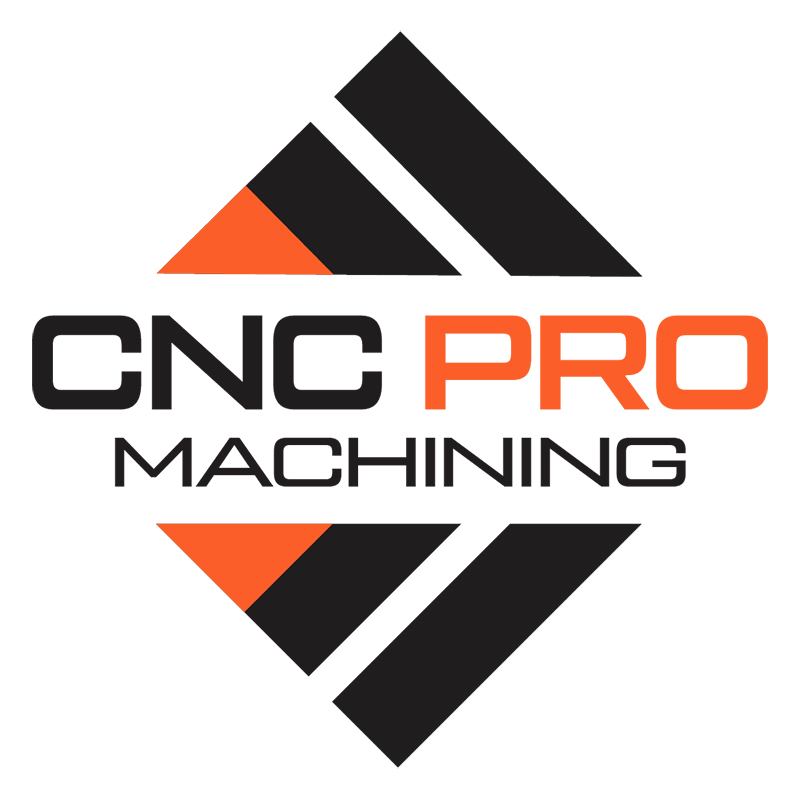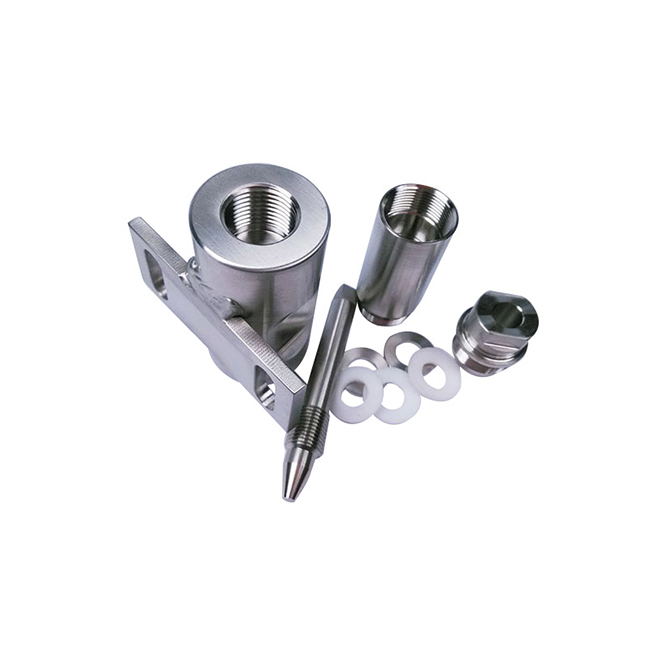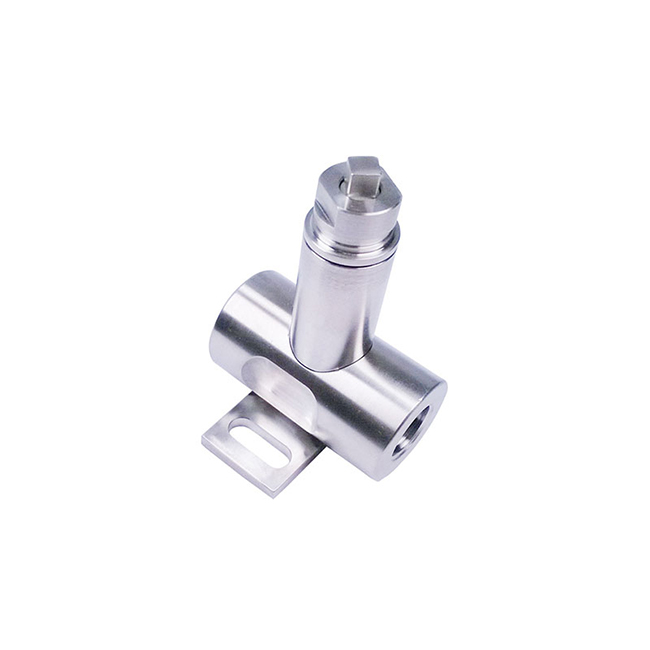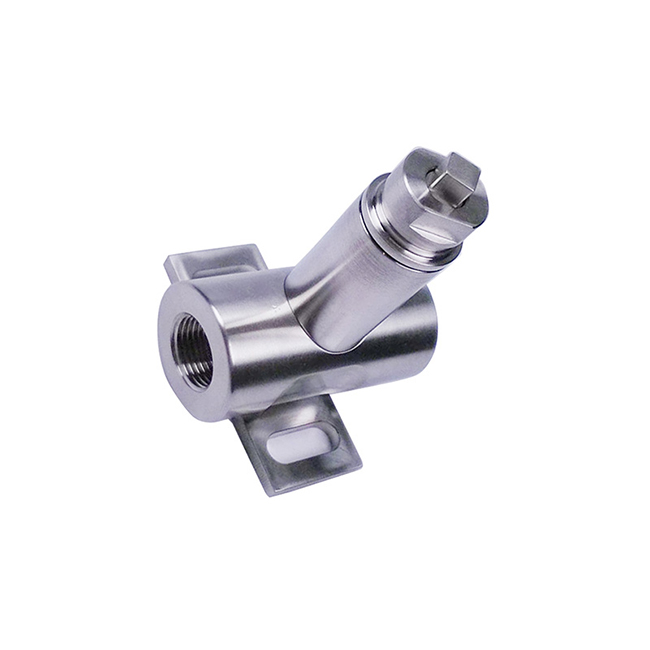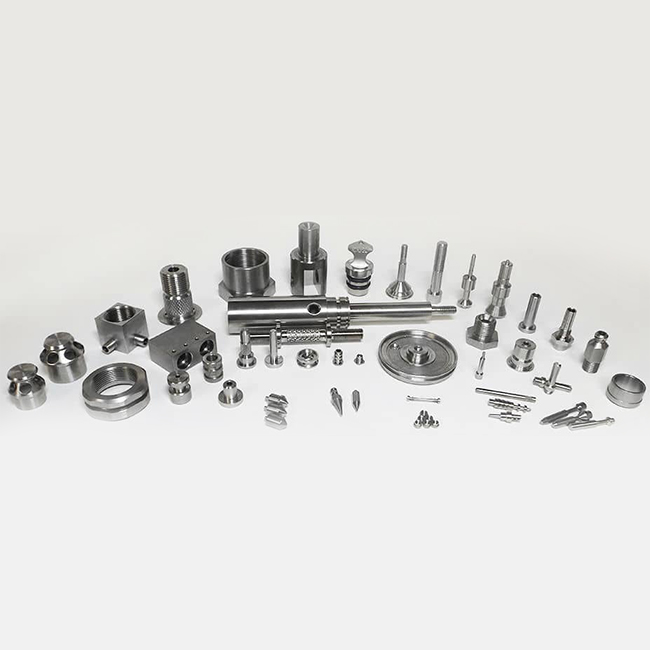


Stainless Steel Machining Parts
Stainless Steel Machining Parts
Although machining custom stainless steel parts is highly challenging, customers cannot afford unacceptable delivery delays. Mastering technical challenges while maintaining an uninterrupted reliable supply is an important core competency at Ruisicheng Manufacturing. The Ruisicheng team of manufacturing professionals knows the distinctive properties of all the 150 different metal alloys in the Stainless category, and adjust the production process to maximize production efficiency.
Product Introduction
Stainless Steel is a steel alloy which contains a minimum of 10% chromium. The additional chromium provides a pristine surface finish and exceptional corrosion resistance not found in carbon steels.
Product Parameter (specification)
Product name | |||
Material | l S32101, S32304, S32003, S31803, S32205, S32760, S32750, S32550, S32707, and S33207.
| Inner box size | ---- |
Technology | Machine face,chrome | Carton size | ----- |
Colour | custom | Packaging instruction | Carton Box |
Application | car | Mode of transport | Express;air;shipping |
Product size | custom | Proofing time | 1-7days |
Net weight | ----- | Delivery time | 15-30days |
Gross weight | ----- | Place of origin | China |
Warranty | 12 months | After sales service | 24 hours online |
Product feature and application
Properties
l High strength
l Self-protective
l Excellent heat resistance
l Excellent corrosion resistance
l Excellent impact resistance
l Typically doesn’t require surface finishing
Applications
l Cookware
l Home appliances
l Hand tools
l Storage containers
l Pressure tanks
l Automotive parts
Product qualification
Types of Stainless Steel
l Austenitic: Non-magnetic, highly formable and can be cold worked, but not heat treated. Austenitic stainless steel is corrosion resistant but prone to stress corrosion cracking. Often used to make shafts, valves, bolts, bushings, nuts, aircraft fittings, brewing equipment, and cryogenic vessels. Austenitic stainless steels are either 200 or 300 series with common grades including 201, 202, 301, 302, 303, 304, 305, 308, 309, 310, 314, 316, 317, 321, 347, 348, and 384.
l Ferritic: Magnetic with lower ductility and corrosion resistance than austenitic grades. Ferritic stainless steel grades have a high resistance to stress corrosion cracking and can be cold worked, but are not heat treated. Often used to make heat exchangers, automotive fasteners, and furnace components. Ferritic stainless steels are 400 series with common grades including 405, 409, 430, 434, 436, 442, and 446.
l Martensitic: Magnetic and heat treatable with higher strength but lower corrosion resistance than ferritic grades. Often used to make pump shafts, bolts and screws, valves, bushings, rivets, coal chutes, cutlery, jet engine parts, aircraft fittings, mining machinery, rifle barrels, and fire extinguisher inserts. Martensitic stainless steels are 400 and 500 series with common grades including 410, 414, 416, 420, 431, and 440.
l Precipitation Hardening Grade: These grades are heat treatable, typically have much higher strength than austenitic stainless steels and retain much of their strength in high temperatures. Often referred to as PH Type stainless steel, and used to make military equipment and aircraft structural components. Common grades include 17-7 PH, PH 15-7 Mo, 17-4 PH, and 15-5 PH.
l Duplex: A hybrid of austenitic and ferritic steels, duplex stainless steels are known for exceptionally high strength and stress corrosion cracking resistance. Duplex stainless steels are easily heat treated but difficult to cold form. Often used to make chemical processing equipment, pressure vessels, and heat exchanger components. Common UNS grades include S32101, S32304, S32003, S31803, S32205, S32760, S32750, S32550, S32707, and S33207.
Deliver,shipping and serving
Q1. What is your terms of packing?
A: Generally, we pack our wheels in brown cartons and also accept to design customers' logo on carton.
Q2.How many stock wheels and molds do you have?
A:More than 18,000 wheels and hundreds of wheel molds we get.
Q3. What is your terms of payment?
A: T/T 40% as deposit, and 60% before delivery. We'll show you the photos of the products and packages before you pay the balance. Also, we accept flexible safe payment term, T/T,,WESTERN UNION,PayPal.
Q4. What is your terms of delivery?
A:FOB, CFR, CIF, DDU,DDP
Q5. How about your delivery time?
A: The specific delivery time depends on the items and the quantity of your order.
1. For stock wheels: we need 7 days to prepare cargo after deposit receipt.
2. For production order: generally, it will take 15 to 40 days after receiving your advance payment.
Q6. What is your sample policy?
A: We can supply the sample if we have ready parts in stock, but the customers have to pay the sample cost and the courier cost. Tell us the sample you prefer and we will check our stock.
Q7. Do you test all your goods before delivery?
A: Yes, we have 3 times 100% test before delivery.
Q8: How do you make our business long-term and good relationship?
A:1. We keep good quality and competitive price to ensure our customers benefit ;
2. We renew our wheels design and expand wheels range in short time, try to give you more complete wheel mold list;
3. We respect every customer as our friend and we sincerely do business and make friends with them, no matter where they come from.
Q9.: What's your best convenient contact way:
Email:sales@cncpromachining.com
FAQ
Q1: Where can we buy Stainless Steel Machining Parts?
A: Please contact us online or call us:+86 137 9879 5337
Q2:What is stainless steel is made of?
A:Stainless steel is a metal alloy, made up of steel mixed with elements such as chromium, nickel, molybdenum, silicon, aluminum, and carbon. Iron mixed with carbon to produce steel is the main component of stainless steel. Chromium is added to make it resistant to rust.
Q3:What is difference between steel and stainless steel?
A:Carbon Steel which is also known as Mild steel contains carbon as the alloy, whereas stainless steel includes chromium. Stainless steels are alloys that are made up of iron and generally contain around 11.5% chromium. ... Stainless Steel is more resistant to corrosion than Carbon Steel.
Q4:Why is stainless steel stainless?
A:Is stainless steel really Steel?
In fact, although stainless steel is an alloy that contains chromium and other elements offering a certain amount of resistance to corrosion the base material is virtually as active as ordinary carbon steel. ... In other words, stainless steel is not at all maintenance-free. It can, however, be said to be low maintenance.
Q5:What are the 3 types of stainless steel?
A:The 3 main types of stainless steel are austenitic, ferritic, and martensitic. These three types of steels are identified by their microstructure or predominant crystal phase.
Q6:What can make stainless steel rust?
A:The chromium in stainless steel when exposed to oxygen in the atmosphere forms a thin invisible layer called chromium oxide. This invisible layer covering the entire surface gives stainless steel its ability to resist stains and rust. If this layer is damaged rust is formed on the surface at the point of that damage.
Q7:How long will stainless steel last?
A:While they can last 30-50 years and were originally though to be resistant to corrosion, time has proven otherwise. In fact, corrosion is one of the bigger problems with copper pipes. And Should corrosion take place, the life expectancy can be greatly reduced to about half of the expect time – more like 15-20 years.
Q8:What is better 304 or 316 stainless steel?
A:The simple answer is 304 contains 18% chromium and 8% nickel while 316 contains 16% chromium, 10% nickel and 2% molybdenum. The molybdenum is added to help resist corrosion to chlorides (like sea water and de-icing salts).
Q9:How can you tell if its stainless steel?
A:Stick the magnet on the piece you are testing. If it holds firmly, the metal is possibly stainless steel. ...
Pick a spot on the piece that you don't mind damaging a little.
Fill the eye dropper with muriatic acid. Drop a small amount of the acid on the test spot. ...
Wipe the acid off the piece. Examine the test spot.
Q10:Which is better SS 304 or 316?
A:What's the difference between 304 and 316 stainless steel? The simple answer is 304 contains 18% chromium and 8% nickel while 316 contains 16% chromium, 10% nickel and 2% molybdenum. The molybdenum is added to help resist corrosion to chlorides (like sea water and de-icing salts).
Q11:Why is it called stainless steel?
A:Stainless steel is called that because it doesn't rust or discolor, unlike regular steel or plain iron. This is because of the chromium in the alloy. It's just enough chromium to cause a chromium oxide layer on the stainless steel.
Q12:Does stainless steel change color?
A:Stainless steel is harder than silver, so the steel jewels can't get scratched easily. They do not change their colour, do not rust and oxidise.
Latest news
304 stainless steel processing method suitable for CNC machining
The enageer who are machining know that stainless steel is difficult to process and the hardness is not high, but drilling, tapping and roughing are very painful things. So here, we share the 304 stainless steel processing method of the CNC processing plant. for everyone.
304 stainless steel CNC roughing
For 304 stainless steel roughing, if the product surface is regular and there are no complicated curved surfaces, most of the materials should be removed by wire cutting, leaving only the remaining amount of finishing. If it is not suitable for writing or laser cutting to remove the material, try to use a coarse milling cutter and side cutting.
304 stainless steel drilling and tapping
When drilling, the drill speed and feed speed should be appropriately reduced to avoid burning the drill bit. When tapping the teeth, you must use a special stainless steel special reinforcing tap to open the cutting fluid. Large threads are machined by thread milling cutters.
